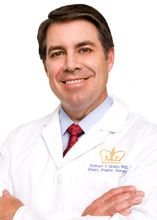Breast Cancer Awareness Is Not Just for October
I have never found a case more poignant than when a woman comes to me seeking reconstructive surgery after a bilateral mastectomy due to breast cancer. Still, such cases are also ones I wish I never had to see.

Throughout my lengthy career as a plastic surgeon, I have never found a case more poignant than when a woman comes to me seeking reconstructive surgery after a bilateral mastectomy due to breast cancer. Still, such cases are also ones I wish I never had to see.
Because of this, I work hard to educate women about the key symptoms they should look for in order to detect breast cancer early, as well as the steps they can take to prevent it. Here, I have outlined the tools for early detection and prevention that I share with my patients.
Mammogram
Mammography is still a powerful tool in early breast cancer detection, so all women should undergo their first screening by age 40. However, there are one-off cases where women with large breasts or “dense breast tissue” should be prescribed a mammogram earlier.
Breast self-exam
It might not seem the orthodox thing to do, but I urge my female patients to get to know their breasts, both by touch and sight. When performed on a regular basis, self-administered breast exams play a huge role in the early detection of breast cancer. During breast self-exam, it is important to look for the following symptoms:
- Swelling, warmth, redness, or darkening of the breast tissue
- Change in breast shape or size
- Dimpling or puckering of the skin around the breast
- Itchiness, soreness, scales, or rash on the nipple
- Inverting of the nipple
- Discharge from the nipple
- New, acute breast pain that does not go away
Genetic test
Thanks to celebrities like Angelina Jolie and Sharon Osborne, testing for the “cancer genes” known as BRCA1 or BRCA2 has been making some major headlines. Mutations in these genes can be precursors to breast or ovarian cancer, so if your patient has a history of any of these cancers in their bloodlines, then it might be a good idea for them to undergo genetic testing.
Healthy weight
Patients who are overweight or obese have a higher level of fat tissue in their bodies, which produce excess amounts of estrogen that have been associated with an increased risk of breast cancer. Therefore, I always stress to my patients that achieving and maintaining a healthy weight is an amazing strike in the fight against breast cancer.
Wholesome diet
If the following list of powerful antioxidants and nutrients falls out of your patients’ comfort zones, then have them incorporate one new food a week for an easier transition to a healthier, breast cancer-fighting diet.
Vitamin D
Vitamin D is not only valuable for building healthy bones and teeth, as it has also been shown to curb the growth of cancerous cells. In fact, the American Association for Cancer Research (AACR) conducted a study that found a link between increased vitamin D intake and an up to 50% reduced risk of breast cancer.
Folate
Low levels of folate have been linked to mutations in DNA, which is characteristic of cancer. Foods that are rich in folate include orange juice, spinach, dried beans, asparagus, and vitamin B complex-enriched breads, cereals, and pastas.
Cruciferous vegetables
Broccoli, arugula, cabbage, cauliflower, and brussels sprouts all contain high amounts of sulforaphane, which was recently found to target and kill cancer cells while leaving healthy cells unaffected.
Omega-3 fatty acids
This nutrient always appears on my “what to eat” lists for both beauty and health. As proponents of reducing inflammation — an environment where cancer thrives – omega-3 fatty acids can be found in fatty fish like salmon, as well as flaxseeds and walnuts.
Antioxidants
Antioxidants naturally filter impurities and cancer-causing chemicals out of the body. Rated at the top of the list are blueberries and green tea.
--
I am honored and humbled by the breast cancer survivors I have had the pleasure of working with, and I am proud to have provided some small piece in their healing puzzle. I hope you will join me in educating women about early breast cancer detection and preventative care. Together, we can help reduce the number of patients affected by this horrible disease.
Robert T. Grant, MD, MSc, FACS, is Chief of the combined Divisions of Plastic Surgery at New York-Presbyterian Hospital-Columbia University Medical Center and New York-Presbyterian Hospital-Weill Cornell Medical Center. He is also Associate Clinical Professor of Surgery in the College of Physicians and Surgeons at Columbia University and Adjunct Associate Professor of Clinical Surgery at Weill Cornell Medical College. For more information about Dr. Grant or to contact him, visit his website at www.robertgrantmd.com.